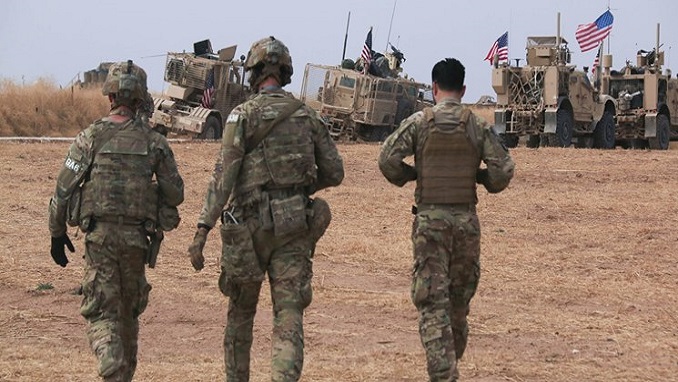The US military’s presence in Afghanistan is larger than the public has been led to believe as Washington mulls a full withdrawal from the country as part of a deal with the Taliban, RT reports.
Facing a high-stakes choice and running out of time to make it, the administration of President Joe Biden is wrestling with whether to follow through with a full withdrawal in the next seven weeks of the 2,500 American troops still in Afghanistan — except, as it turns out, that number is actually around 3,500.
Citing US, European and Afghan officials, the New York Times reported that the US has about 1,000 more troops in the war-torn nation than it has disclosed. Officially, the Pentagon claims that its forces in Afghanistan total 2,500, but this figure allegedly does not accurately represent how many US boots are actually on the ground there.
Special Operations forces have been taken ‘off the books’, according to a senior US official who spoke to the paper, as well as some units that have been deemed ‘temporary’ or are transitioning from the warzone. Some of these elite units reportedly work under both the Pentagon and the CIA.
A thousand troops may seem like a small number compared to the roughly 100,000 who were there at the height of the war. But the scope of the US presence has become a contentious issue in Afghanistan — where the Taliban want the Americans gone, while the government’s beleaguered security forces rely on US air support — and also in Washington.
Members of Congress have repeatedly called for an increase in troops if the United States decides to stay past the withdrawal date outlined in the agreement, which was reached just over a year ago.
The cloudy accounting around the troop numbers results from some Special Operations forces having been put “off the books”, according to a senior US official, as well as the presence of some temporary and transitioning units.
These troops, according to a second US official, include Joint Special Operations Command units, some of them elite Army Rangers, who work under both the Pentagon and the CIA while deployed to Afghanistan.
Having more troops in a country than the Defense Department officially acknowledges is common practice. From Syria to Yemen to Mali, the United States often details military troops to the CIA or other agencies, declares that information “classified” and refuses to publicly acknowledge their presence.
Under the Donald Trump administration, the US began scaling back its presence in Afghanistan, which was at around 12,000 troops this time last year. The withdrawal angered some in the Pentagon who claimed that they would need at least 8,600 troops to continue training operations and counterterrorism missions in the country.
The Obama administration used similar sleights of hand under the bland, bureaucratic term “force management levels”, which resulted in more troops in war zones with little public oversight.
“We’ve seen this movie before,” said Laurel E. Miller, a former top State Department official who worked on Afghanistan and Pakistan diplomacy for former President Barack Obama and for Trump.
“To some extent, the fudging of the numbers reflects the arbitrariness of political fixation on declaring specific numbers,” Miller added.
A recent report tasked with reviewing a peace deal with the Taliban concluded that 4,500 troops would be necessary in order to “secure US interests” in Afghanistan.
The disclosure of the allegedly larger-than-reported military presence in Afghanistan comes weeks before a May 1 deadline set by Trump to complete a full withdrawal. It is not yet clear whether President Joe Biden’s administration will honor the plan, which was part of an agreement with the Taliban.
The Washington Post reported on Saturday that many US officials thought it was unlikely that all American forces would leave the country by May.
Recent efforts to bring the nearly 20-year-old conflict in Afghanistan to an end have been slow to produce results. However, the Afghan government recently agreed to attend an international conference with the Taliban in Turkey next month, at the invitation of the Biden administration.
The deliberations come as the Taliban has capitalized on foreign troop reductions to expand its influence in contested provinces and surround cities and towns. Biden administration officials cite the raging violence as one aspect of the Taliban’s failure to comply with the agreement the previous administration signed with the militants last year in Doha, Qatar.
“I think there is some work to do to get them to full compliance,” a senior administration official said earlier this month, noting that the administration believes the Taliban has not fully broken with al-Qaeda. The official spoke on the condition of anonymity to discuss internal deliberations.
